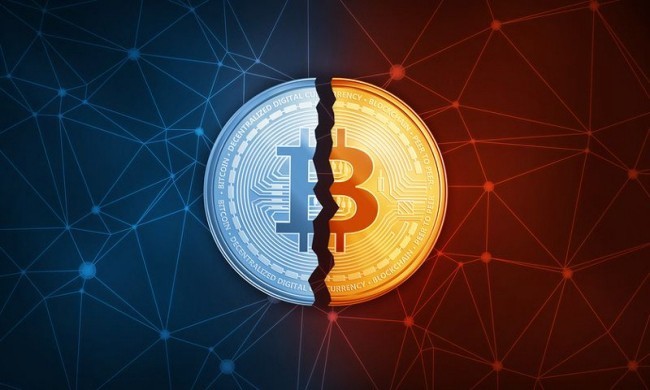Bitcoin halving events play a crucial role in the Bitcoin network. Here’s everything you need to know about the Bitcoin halving scheduled for 2024.
Bitcoin has always been at the forefront of innovation, continuously redefining our understanding of decentralized technologies. Since its inception, Bitcoin has introduced a groundbreaking system designed to address the shortcomings of traditional finance and empower users worldwide. This vision has laid the foundation for today’s cryptocurrency market.
At the heart of Bitcoin’s technology lies a unique mechanism known as Bitcoin halving. Occurring approximately every four years, Bitcoin halving events have historically been pivotal moments for Bitcoin, capturing the attention of investors, tech enthusiasts, and the general public alike.
In this article, we’ll delve into the concept of Bitcoin halving, explore its historical significance, and examine its potential impact on the cryptocurrency landscape leading up to the 2024 halving.
What Is Bitcoin Halving?
To grasp the significance of the upcoming Bitcoin halving, it’s essential to understand what Bitcoin halving entails and how it operates within the broader Bitcoin network.
Bitcoin halving is a predetermined event in the network that reduces the reward given to Bitcoin miners for processing transactions. Miners play a crucial role in the Bitcoin ecosystem, using powerful computers to validate transactions and add new blocks to the blockchain. In return for their efforts, miners are rewarded with new bitcoins. This process not only introduces new bitcoins into circulation but also ensures the security and integrity of the entire Bitcoin network.
How Bitcoin Halving Works?
Bitcoin halving events occur approximately every 210,000 blocks, or roughly every four years. Initially, the reward for mining a block was 50 bitcoins. Following the first halving in 2012, this reward was halved to 25 bitcoins, then to 12.5 bitcoins in 2016, and further reduced to 6.25 bitcoins in 2020.
The 2024 halving will see the block reward decrease to 3.125 BTC per block. This reduction in rewards is a fundamental aspect of Bitcoin’s design, creating a form of artificial scarcity.
The Purpose of Halving Events
Bitcoin halving was integrated into the Bitcoin protocol by its creator, Satoshi Nakamoto, as a mechanism to control inflation. Unlike fiat currencies, which can be subject to inflationary pressures, Bitcoin has a fixed supply capped at 21 million coins. Halving ensures that the creation of new bitcoins slows down over time, making Bitcoin inherently deflationary. This scarcity is one of the primary reasons why Bitcoin is often referred to as ‘digital gold.’
Importantly, halving events are not triggered by transaction volume or external factors but are solely based on the number of blocks mined. This predictability adds transparency to Bitcoin’s monetary policy, setting it apart from the unpredictable fiscal policies of traditional currencies.
The History of Bitcoin Halving
To understand the full impact of Bitcoin halving, it’s essential to examine its historical context within Bitcoin’s development. By analyzing past halving events, we can identify patterns and trends that shed light on Bitcoin’s revolutionary role in the digital asset landscape.
A Brief Overview of Bitcoin
Bitcoin, the first decentralized digital currency, was introduced by an individual or group of individuals under the pseudonym Satoshi Nakamoto. It was unveiled to the world in a 2008 white paper titled “Bitcoin: A Peer-to-Peer Electronic Cash System.” The first block of the Bitcoin blockchain, known as the genesis block, was mined in January 2009. Since then, Bitcoin has evolved from a novel digital experiment into a prominent financial asset, inspiring the creation of numerous other cryptocurrencies.
Past Bitcoin Halving Events
2012 Halving: The first Bitcoin halving occurred on November 28, 2012. The block reward was reduced from 50 bitcoins to 25 bitcoins. While this event went largely unnoticed by the general public, it marked a significant milestone for early adopters and miners in the Bitcoin community.
2016 Halving: The second halving took place on July 9, 2016, reducing the block reward to 12.5 bitcoins. By this time, Bitcoin had gained greater mainstream adoption, and the halving generated speculation about its potential impact on Bitcoin’s price and miner ecosystem. 2020 Halving: The most recent halving in May 2020 saw the block reward decrease to 6.25 bitcoins. This event occurred amid growing institutional interest in Bitcoin and garnered attention from a broader and more diverse set of stakeholders than previous halvings.
Bitcoin Halving 2024: What to Expect
As the Bitcoin community prepares for the next halving, there is a sense of anticipation and speculation about its potential effects. Anticipating the impact of this event requires considering both technical aspects and market dynamics that may unfold.
The 2024 Bitcoin halving is projected to occur when the 840,000th block is mined in April 2024. At this point, the block reward for miners will be halved from 6.25 bitcoins to approximately 3.125 bitcoins per block.
Historically, halving events have sparked increased public interest and price volatility. While past performance is not indicative of future results, some analysts anticipate a bullish market trend leading up to and following the halving. This outlook is particularly noteworthy given Bitcoin’s recent price surge, driven by optimism about ecosystem developments and the approval of spot Bitcoin ETFs earlier this year.
Predictions surrounding the upcoming halving often focus on its implications for miners. While this has been a topic of discussion since Bitcoin’s inception, speculation about how this specific halving will impact Bitcoin mining has intensified in light of recent ecosystem developments. Supporters of Ordinals, for instance, argue that transaction fees associated with minting inscriptions – which remain popular – could mitigate the impact of lower block rewards for miners.
Of course, many of these forecasts are speculative, especially those related to the potential impact of newer Bitcoin protocols like Ordinals on miners following the 2024 halving event.
A Critical Component of the Bitcoin Network
The significance of the Bitcoin halving extends beyond the cryptocurrency community. It challenges conventional notions of monetary policy and value, showcasing the innovative potential of blockchain technology. Halving events not only affect the price and scarcity of Bitcoin but also ripple across the entire digital currency landscape.
The 2024 halving underscores Bitcoin’s enduring appeal and evolving narrative. While it presents challenges for miners and investors navigating changing economic landscapes, it also encourages the Bitcoin community to explore opportunities for growth, innovation, and continued mainstream adoption of cryptocurrency.
As Bitcoin matures and gains acceptance, halving events serve as pivotal moments reaffirming its foundational principles. For enthusiasts, investors, and observers alike, the halving is a reminder of the dynamic and transformative nature of digital currencies. It fosters ongoing exploration and understanding, not only of Bitcoin but also of the future possibilities that cryptocurrencies hold in reshaping our global financial system.
The 2024 Bitcoin halving is more than just an event; it’s a milestone in the digital currency revolution, offering insights into the intricate interplay between technology and economics that defines the world of crypto.
Feel free to share your thoughts in the comments section. Stay updated on instant news by following us on Twitter, Telegram, and YouTube.


